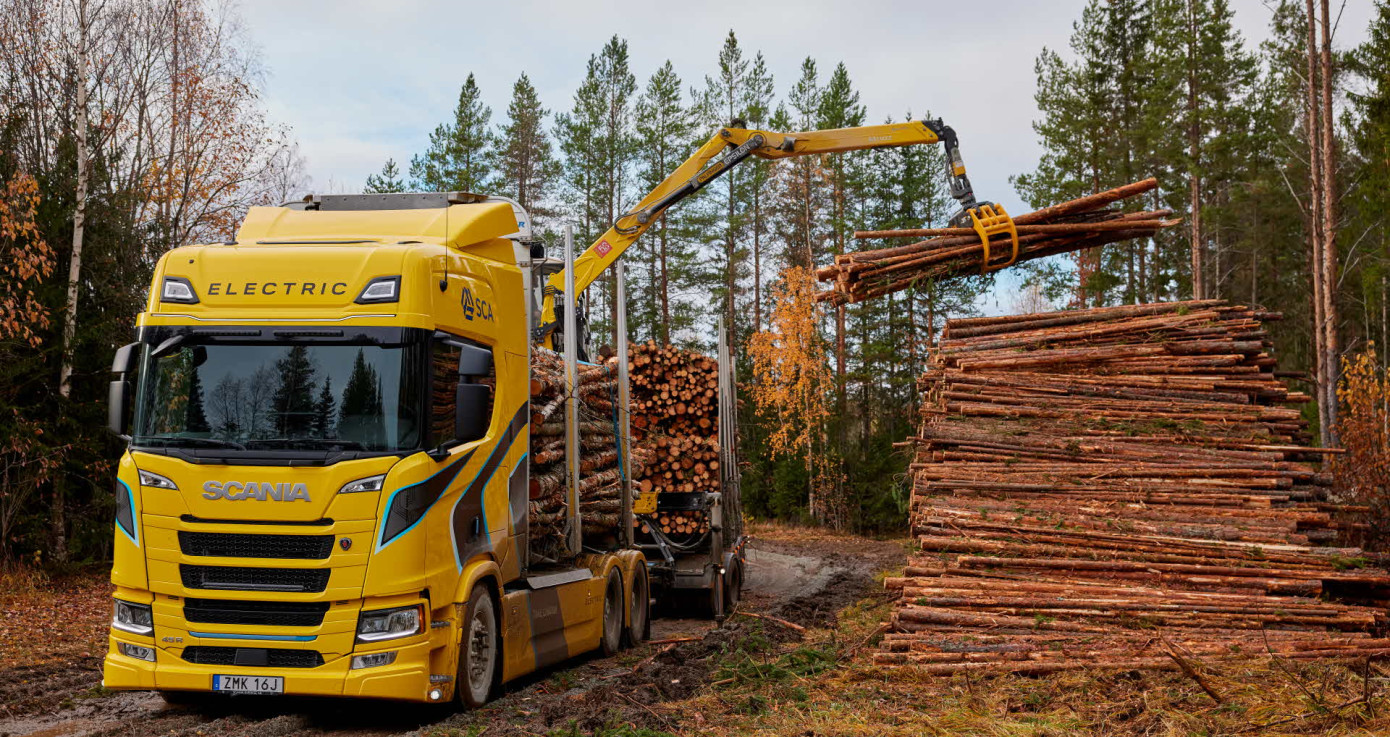SCA's new electric timber truck with a crane is finally rolling in the Östavall area. The truck, which is a collaborative project between SCA and Scania, is the first in the world to collect timber in the forest for further transport to a timber terminal.
The new electric timber truck marks another important milestone for SCA and the work to electrify heavy timber transports. The truck is expected to result in 170 tons lower carbon dioxide emissions per year compared to a regular timber truck.
"This is an important project for us to continue contributing to a more sustainable society," said Ulf Larsson, CEO of SCA. “By managing the forest and making renewable products that can replace those with a high carbon footprint, SCA creates about 13 million tons of positive climate benefits each year. That figure can become even better as we transition the heavy road transports in our value chain.”
“It is exciting that it’s finally in place. From the first conversations with Scania, it took just over two years for this electric timber truck with a crane to become a reality. Our first electric timber truck only runs between the terminal and Obbola paper mill, but now our development work continues as we electrify the transports from the forest to the terminal," said Anton Ahlinder, Business Developer at SCA Skog.
The new electric timber truck is part of the forest industry’s innovation project TREE, which aims for half of the new trucks in the forest industry to be electric by 2030. SCA is one of several participants.
SCA is responsible for a significant part of the financing of the electric timber truck, but the vehicle is owned by Lövgrens Åkeri & Entreprenad.
“To make the transition successful, we need to have haulage companies with us, and therefore it is good that this vehicle is owned by a local company. Then, we will need price pressure on the vehicles, more charging infrastructure, a better power grid, and that working time regulations offer flexibility related to charging. Then the heavy traffic will gradually move towards more electrification," says Ulf Larsson.
